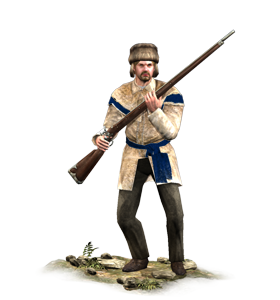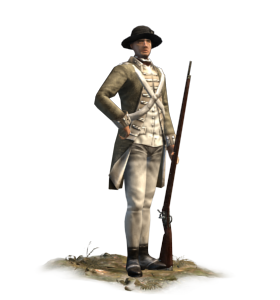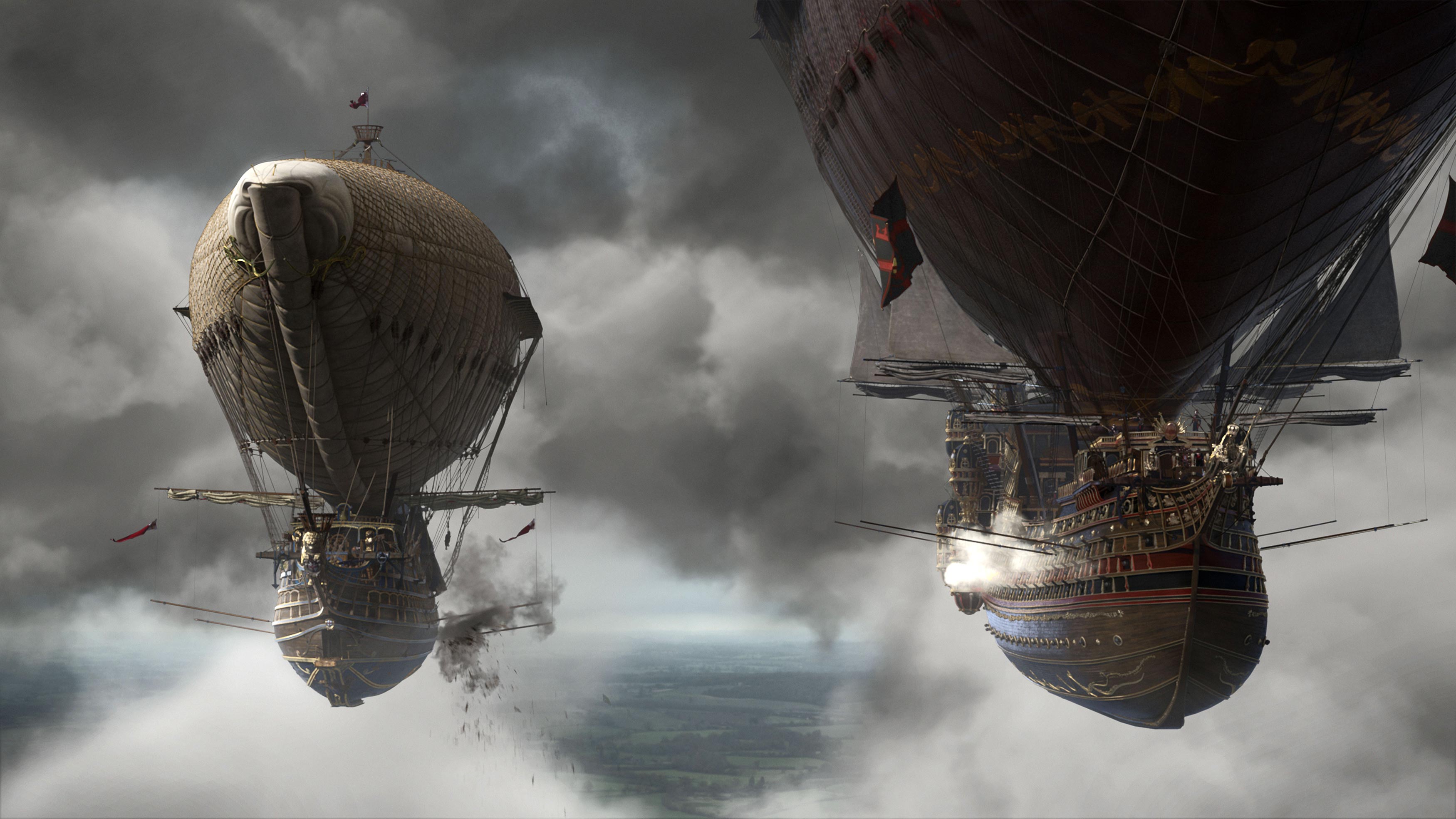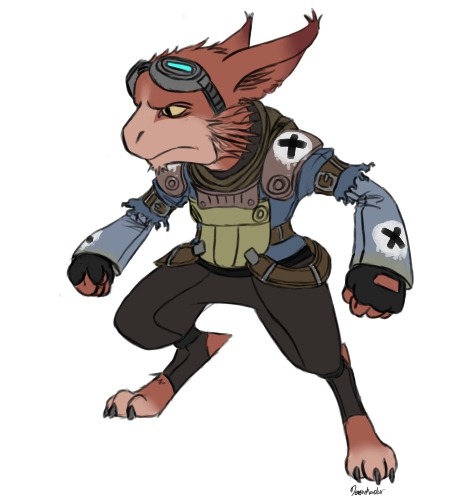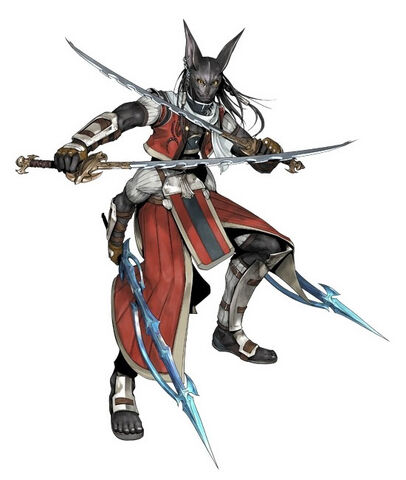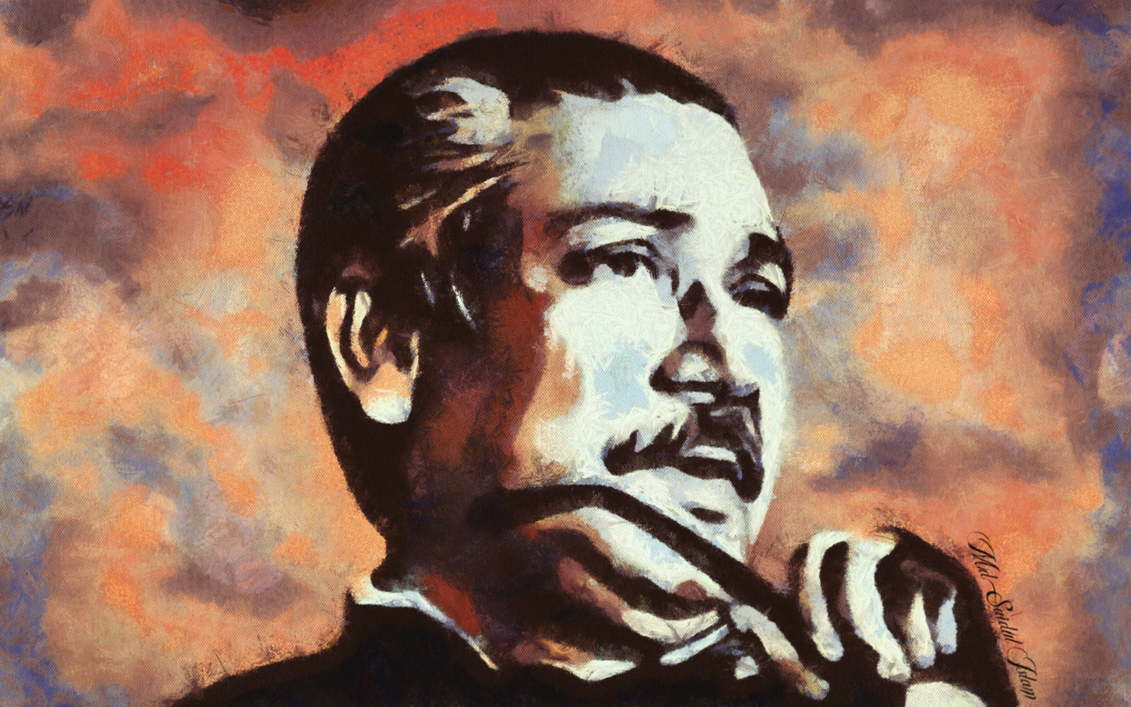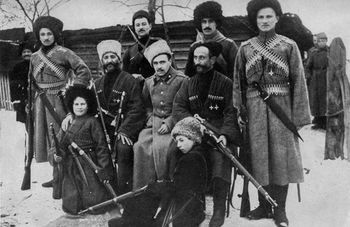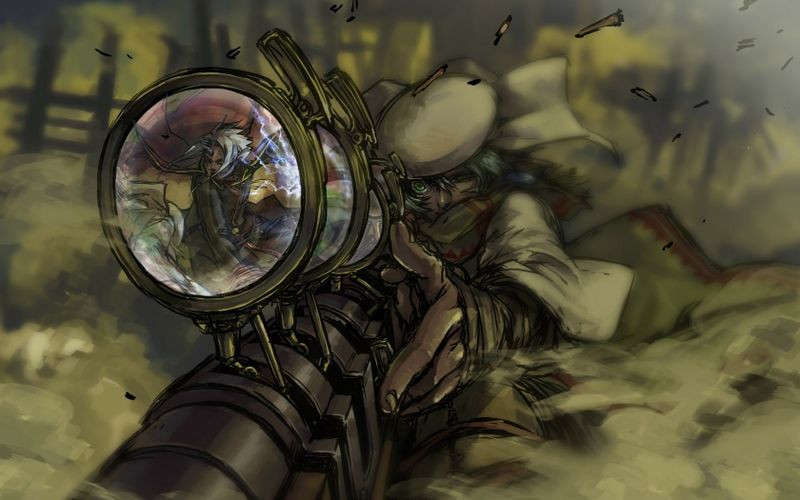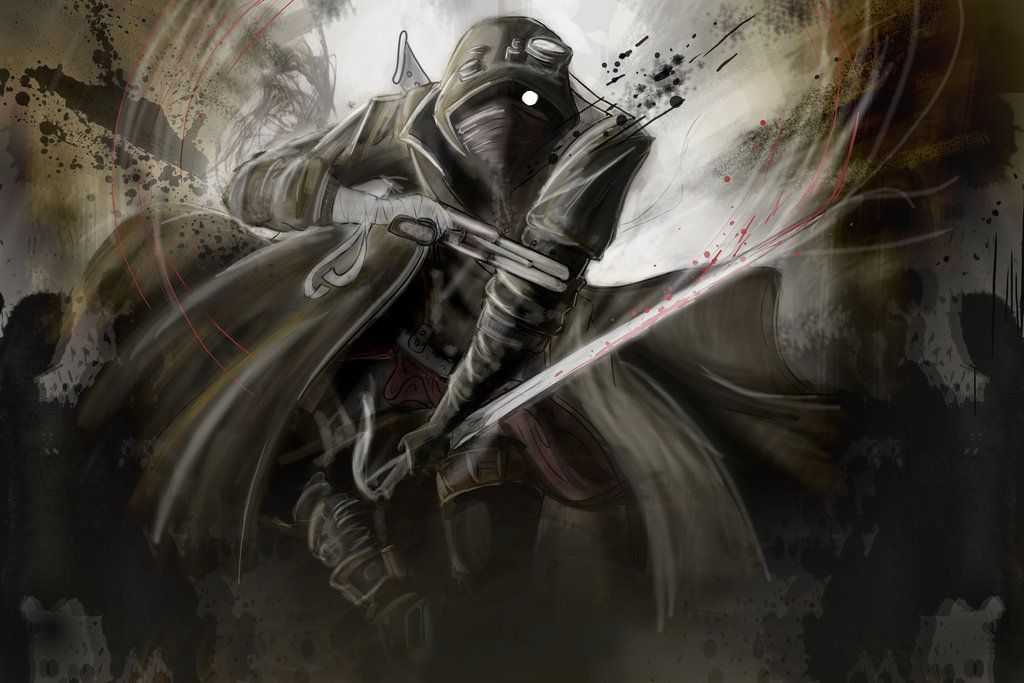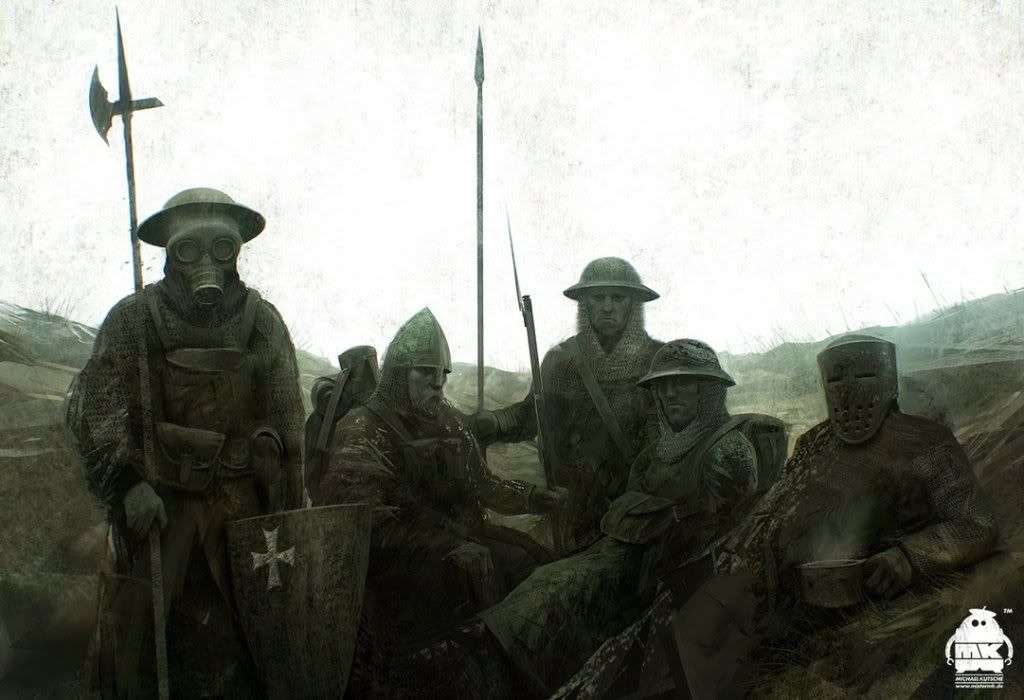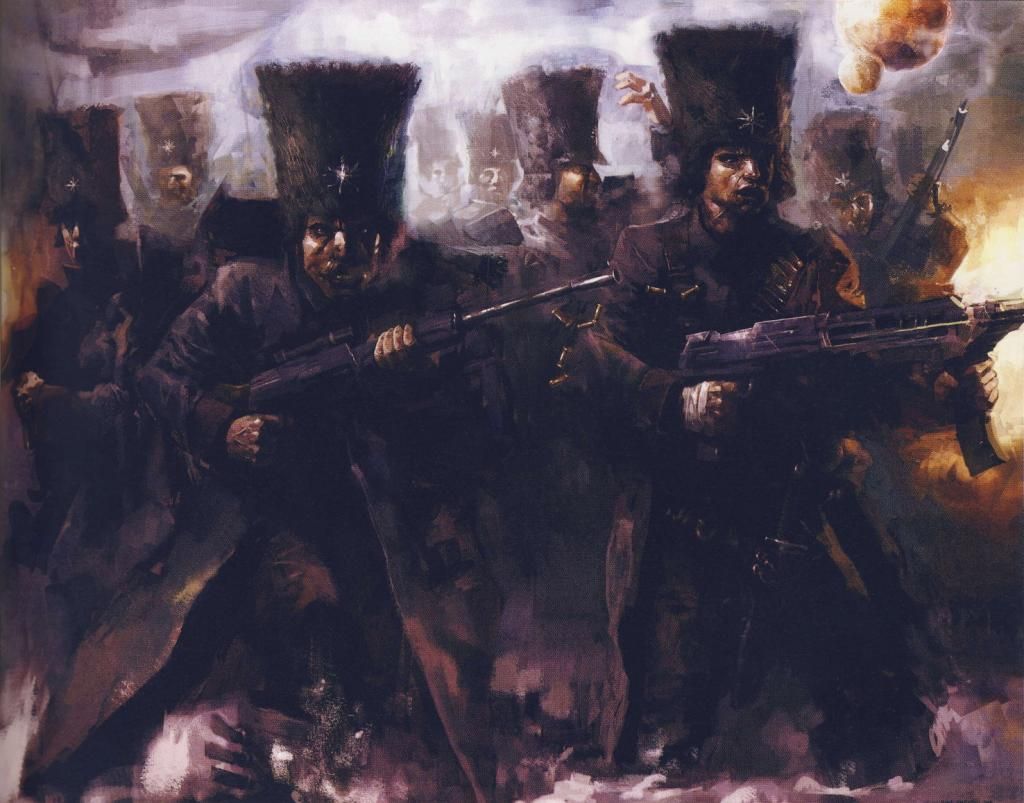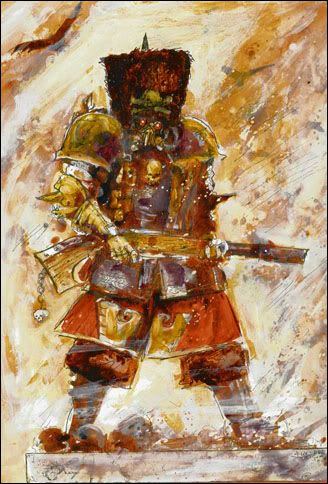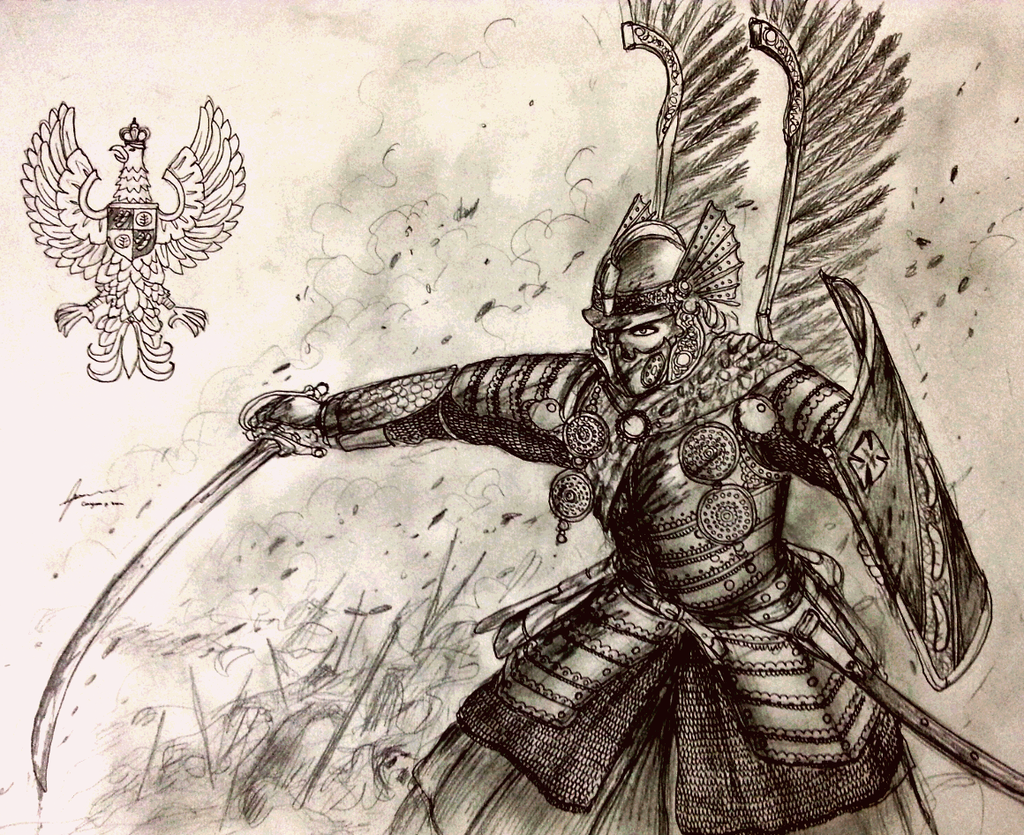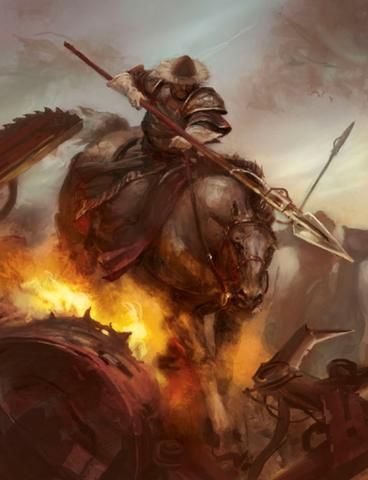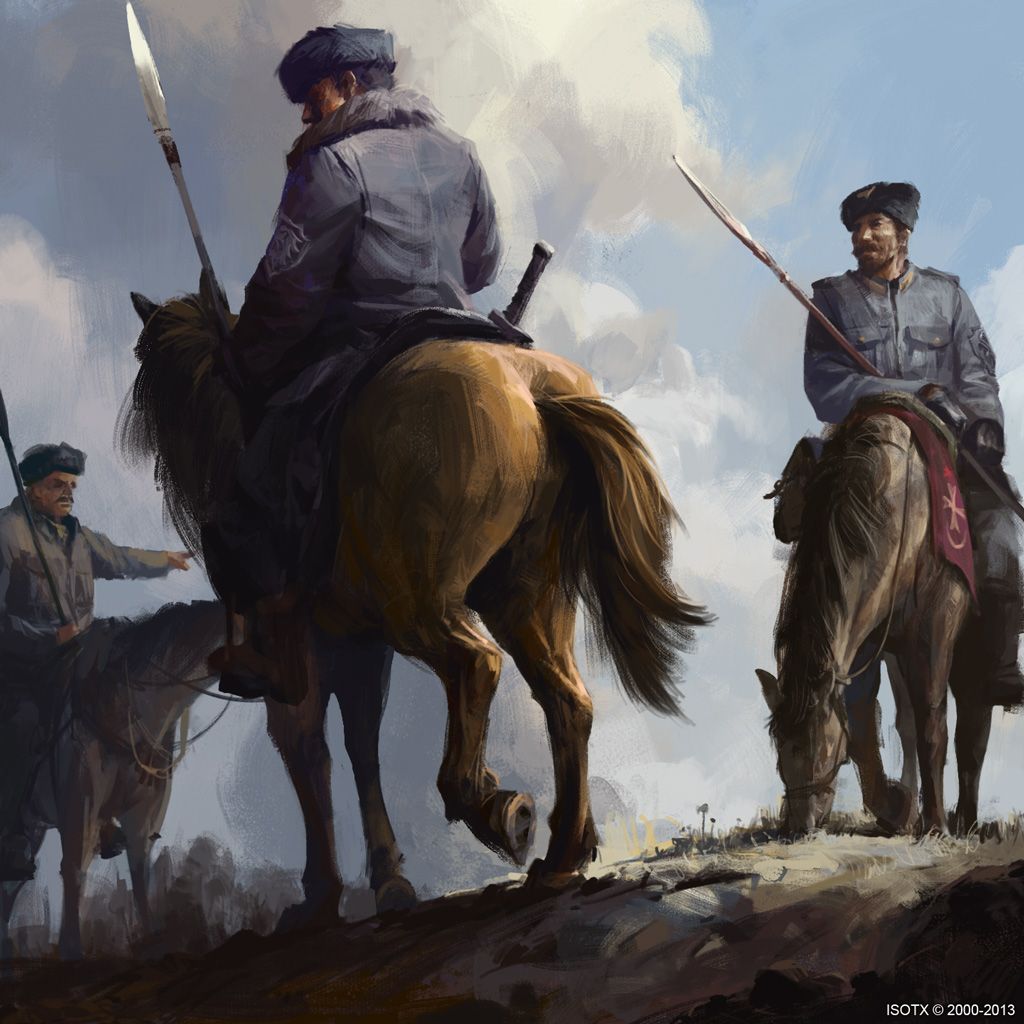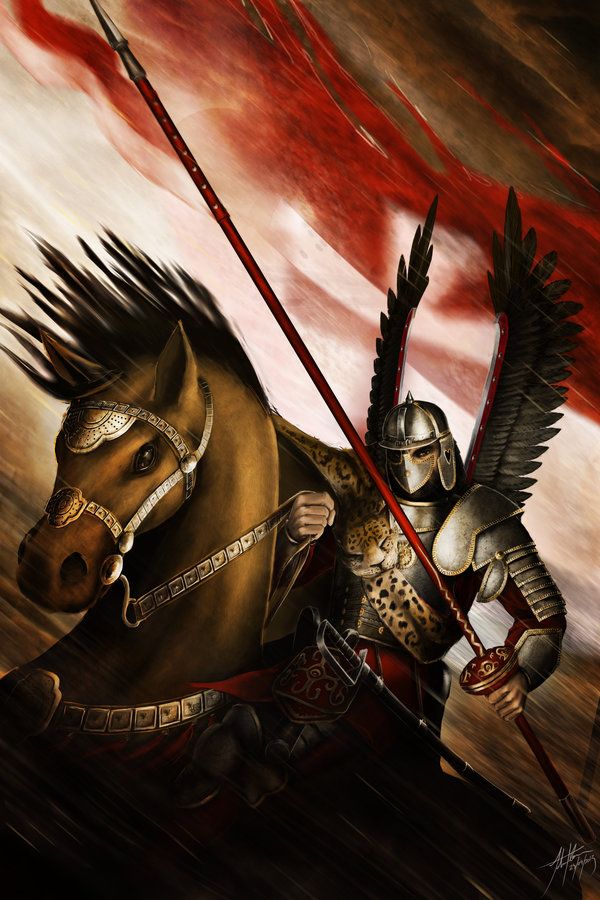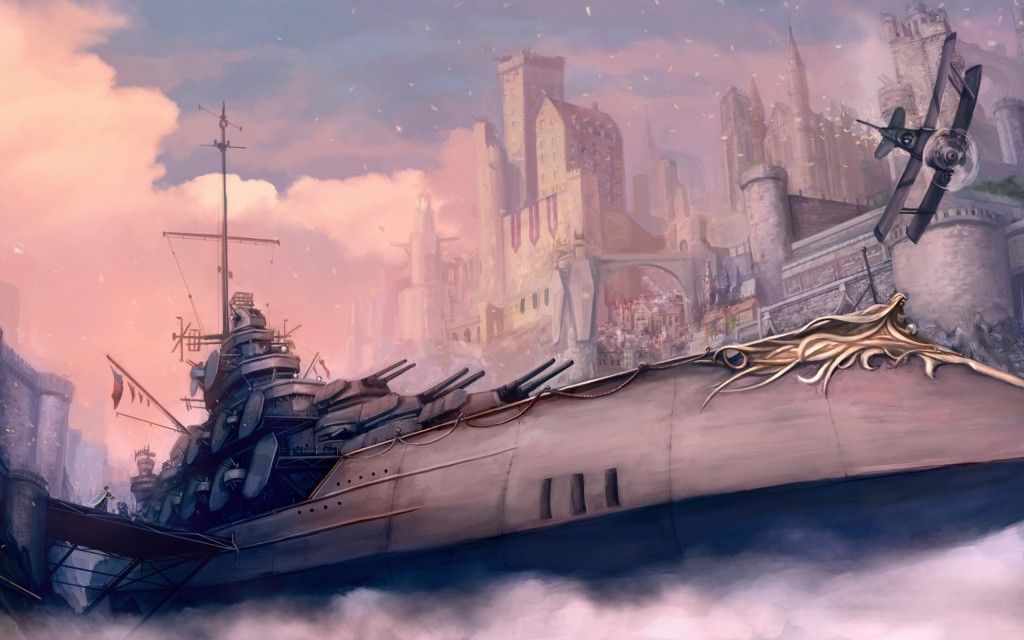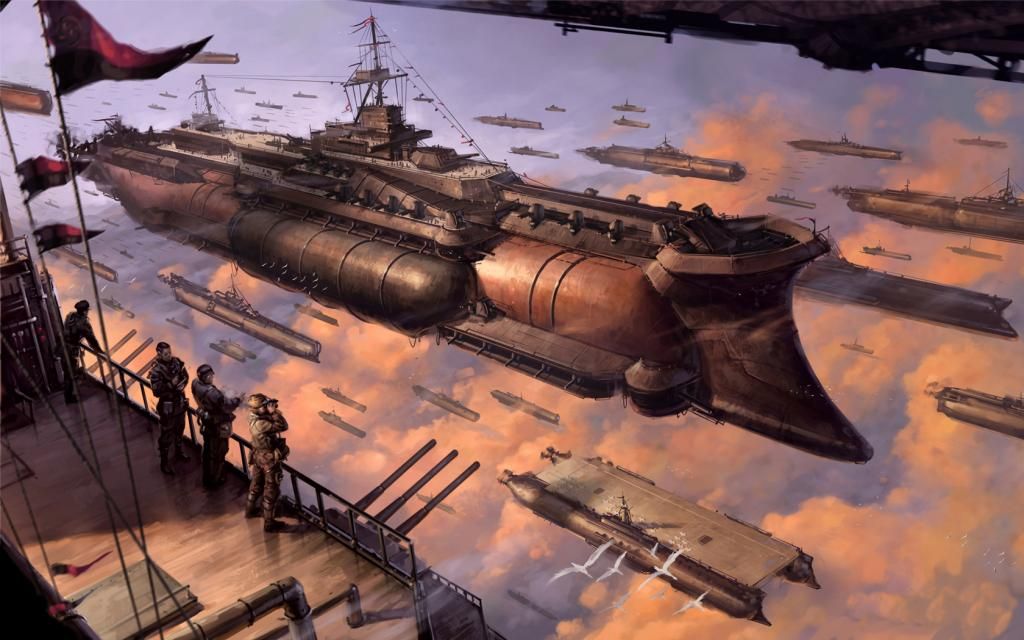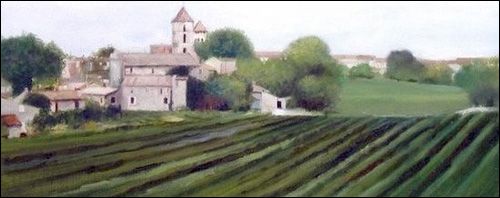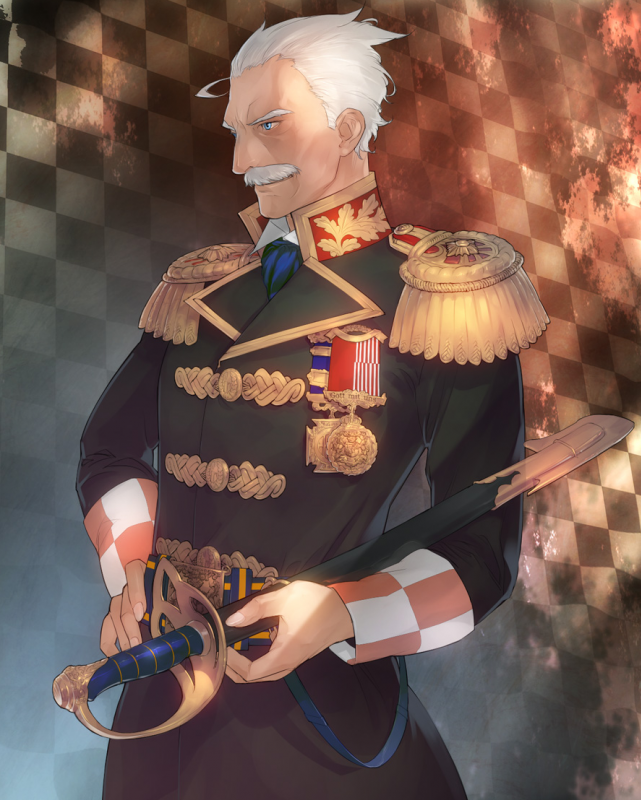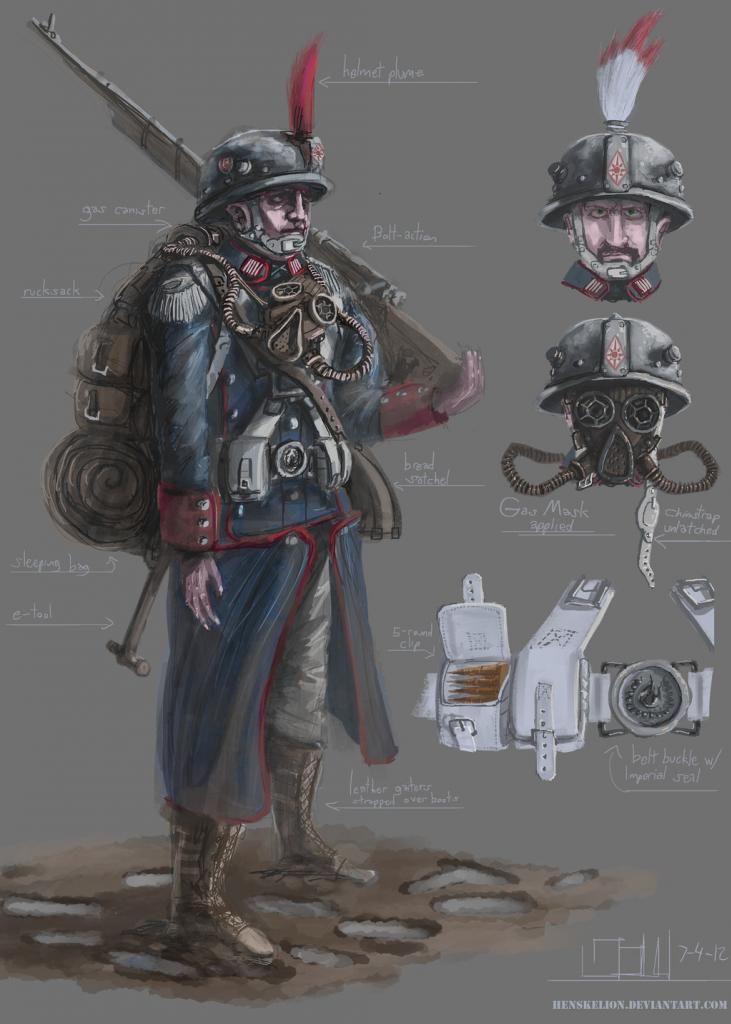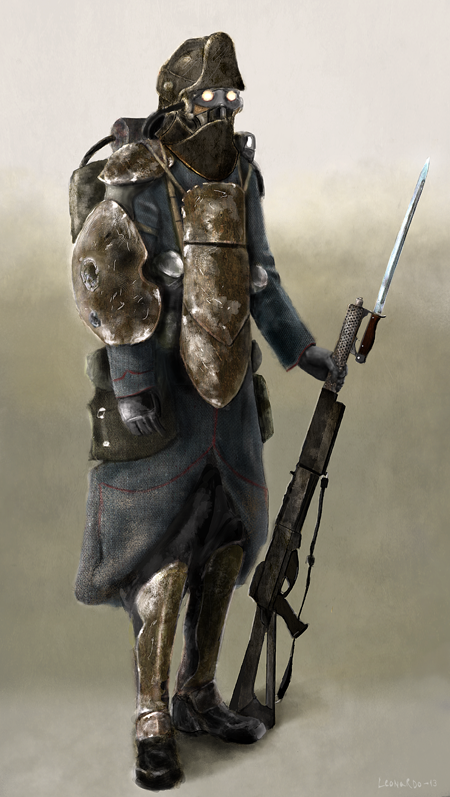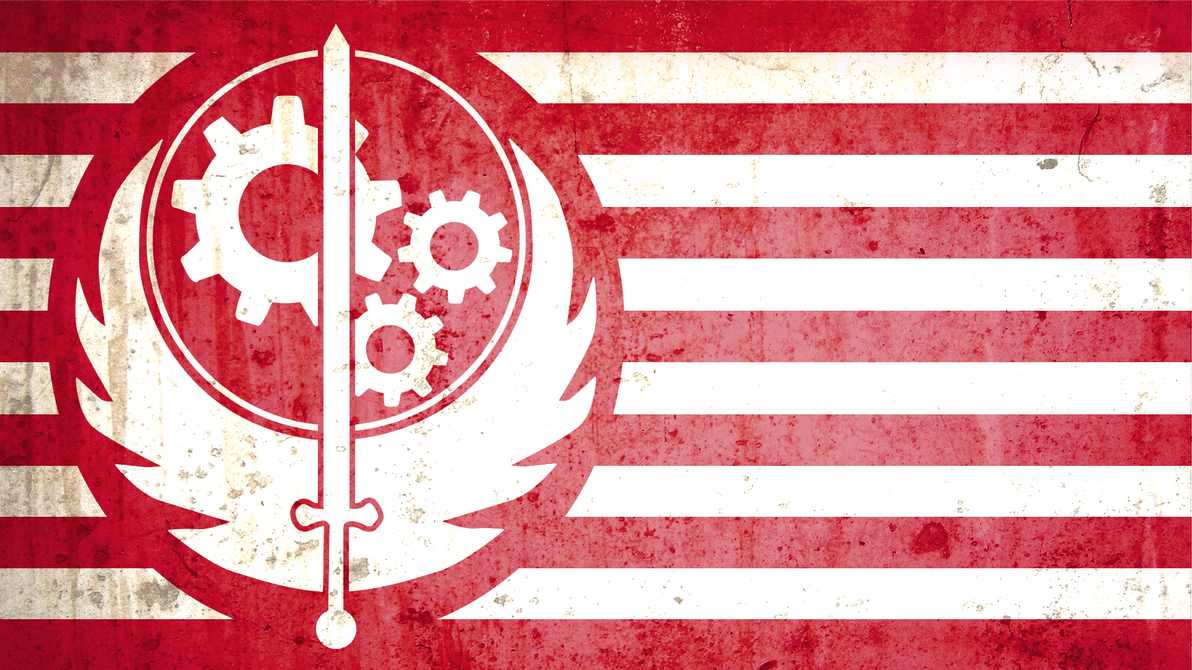Nation Sheet
Accrossinate Empire The Imperial Flag of the Accrosinnate Empire. The purple uncased within a golden cross symbolizes the Emperor that keeps the Empire united and strong. The gold cross itself symbolizes the aristocrats and bureaucrats that administer the Emperor's will. The crimson around around the flag symbolizes the strength and Orminnian heritage of the Empire. The "E" symbol is the Crassonian letter Epsilon which stands for the first letter of "Eayee", the Crassonian pronunciation of the name of the Ghramite God "Yehaweh". The "I" symbol is the Crassonian letter "Iota" which stands for the first letter of "Iezos", the Crassonian pronunciation for first name of "Aisus Dhristi". The triangle symbol is the Crassonian letter "Delta" which is the first letter for "Divinus Spiritus", which stands for "Divine Spirit." The "A" symbol is the Crassonian letter "Alpha" which is the first letter for the name of the Empire, the Accrossinate Empire. Imperial Motto:
The Imperial Flag of the Accrosinnate Empire. The purple uncased within a golden cross symbolizes the Emperor that keeps the Empire united and strong. The gold cross itself symbolizes the aristocrats and bureaucrats that administer the Emperor's will. The crimson around around the flag symbolizes the strength and Orminnian heritage of the Empire. The "E" symbol is the Crassonian letter Epsilon which stands for the first letter of "Eayee", the Crassonian pronunciation of the name of the Ghramite God "Yehaweh". The "I" symbol is the Crassonian letter "Iota" which stands for the first letter of "Iezos", the Crassonian pronunciation for first name of "Aisus Dhristi". The triangle symbol is the Crassonian letter "Delta" which is the first letter for "Divinus Spiritus", which stands for "Divine Spirit." The "A" symbol is the Crassonian letter "Alpha" which is the first letter for the name of the Empire, the Accrossinate Empire. Imperial Motto: "Accrossii Invicta." Carved on the marble throne of the Emperor and the battle cry of the Accrossinate Legions.
Capital city: Konstalinnos
Nation's History: The Accrossinate Empire started with the rival city-states in the lands of Crassonia. At around 57 to 53 b.d, the rising Elvish powers of Crassonia have established themselves as "city-states". This were independent or autonomous entities, not administered as a part of another local government, whose territory consists of a city and usually its surrounding territory. The city-state's controlled areas outside it's boundaries were usually only surrounding farmlands. The city-states themselves though began to develop unique cultures from one another but would share similarities because of merchants and travelers. The city-states would share the same language, religion or to be more precise, pantheon of Gods and Goddesses and arts. They however differed in the general philosophies of ideologies. By 49 b.d, there came to be five dominant and influential city-states that battled for supremacy. Arres was the city-state completely dedicated to military training and excellence. Nattanos was the city-state that was the center of a center for the arts, learning and philosophy. Beiros was the city-state with a rigid theocratic order and society. Venos the the city-state which focused primarily on sea-trade. Mecellonia was the expansionist city-state always seeking to expand its borders. From 49 to 41 b.d, this city-states began to battle among themselves until a greater threat to their sovereignty arrived. Around the spring of 41 b.d, the Thoellisian Empire appeared at the borders of Beiros. Bringing with him an army said to be numbering around 450, 000 to 900, 000, Emperor Xennon of the Thoellisians viewed the lands of the Crassonian city-states as another easy conquest. The city-states were far to fractured by war and politics to stand against him. And they were far too few in numbers if they united.
Facing the threat of annihilation, the city-states decided to agree on a temporary truce and a pact to fight off the Thoellisians. The new coalition decided to fight the the foriegn invaders at the a point known as "Serros' pass" which was an excellent choke point them to hold off the enemy. To add to this, the Crassonian city-states had the formidable phalanxes. The phalanx was a rectangular mass military formation, usually composed entirely of heavy infantry armed with spears. The warriors who fought at the pass wore tough copper armor, carried near impenetrable shields and wielded spears next to one another. Arres had sent 300 warriors to the battle confident of their victory. Nattanos and Beiros sent 10, 000 warriors skeptical of the outcome. Mecellonia sent 5, 000 warriors that they could spare. Venos sent an estimated 7, 500 warriors fearful of a defeat. Some time at the summer of 40 b.d, the two rival armies met on the pass. It was early morning when the Theollisians started the assault. Thousands upon thousands of Theollisians pressed the attack against the Crassonians. The Crassonians where able to repel the almost endless waves for five days however without wavering. This filled Xennon with anger and frustration as he watched his forces slowly being cut down by the enemy. Fortunes had changed however when the Theollisian scouts discovered another narrow passage around the pass that not even the Crassonians were aware off. Xennon quickly took the opportunity to flank his enemies and marched half of his forces through the pass. Suspicious of the reports from their scouts, the Crassonians were bewildered when they found the pass the enemy was taking they had no knowledge of. The Nattanosians, Bierosians and Venosians retreated beyond the pass of the fields just a few miles from the city-state of Bieros itself. The Arresans and Mecellonians however decided to hold off the enemy and fight to the last breath.
The remaining Arresans and Mecellonians were able to hold off the Theollisian army for a day before falling. The Nattanosians, Bierosians and Venosians had to think of a new strategy now that their former one had failed them. They positioned themselves on an open bay surrounded by water on either sides. Behind them was a row of archers from Bieros and a mercenary cavalry numbering a 1,000 to protect their flanks. The invaders swiftly arrived at their position but the Nattanosian king who led the Crassonian forces, King Etos, noticed that the Theollisians were not using their cavalry which was superior to those at their disposal. Making a huge gamble, Etos ordered his men to advance at the far more numerous enemy. The phalanxes ran towards their foes, knocking out the first line with their shields and impaling the next with their spears. Etos reinforced his flanks, luring the Theollisian's best fighters into his center. The inward wheeling flanks enveloped the Theollisians, routing them. The Persian army broke in panic. The retreating men were then hunted by the cavalry, slaughtering hundreds if not thousands. Xennon was severely angered by this defeat but was powerless to stop it. Xennon planned on another invasion but was thwarted by a rebellion on Theollisian territory.
Two years later, Xennon's son, Achiellis, tried again to once again conquer the Crassonian city-states. Mustering around the same number of warriors his father did, he marched south-west. However this time, he would use a massive navy to land his forces on the coast of Nattanos and use the area as his staging grounds for the entire campaign. However Etos had heard of this plan and immediately sent his fleet to destroy the Theollisian fleet. Although the Theollisian fleet was three times larger than that sent by the Nattanosian, they battered the enemy fleet before they reached land. However the Nattanosians were forced to call off the attack on the Theollisians and disperse when the enemy fleet passed through some bad weather. This gambit worked for the Theollisians however as they managed to get through the small storm safely and landed half of their men on the coast. What awaited them though was another coalition between the city-states led by the Arresians. The battle was swift and brutal and left almost all of Achiellis' soldiers dead.
After the two invasions, the five city-states decided to make a pact of mutual assistance to any other city-state if they needed so. Any city-state that violated this pact would be destroyed by the other states. However this pact was only made so that the battle of the five city-states would be confined to politics and influence, leaving their armies armies able to deal with foreign threats. This alliance among the city-states lasted until Prince Keos of Beiros ran off with Lainna, the wife of Teculus, king of Mecellonia in the 34 b.d. Enraged by this action, Teculus summoned the other city-state rulers to persuade them to attack Beiros. The other rulers were reluctant because Beiros had not commit any major aggressive action towards any of the other city-states. Teculus then tried to justify his the proposed invasion of Beiros by pointing out Keos had actually kidnapped the bride of Teculus. Lainna was taken by Keos without his consent. This was a clear act of aggression. The other states were still reluctant and instead gave the king of Beiros, Miedas, to return Lainna or face the consequences. However Miedas was unaware of his child's deeds and refused to give up Lainna simply because he didn't knew Keos was hiding her. After a month of refusal, the other states reluctantly agreed to wage war with Beiros. After a siege that took 4 months, the the coalition of forces between Nattanos, Arres, Venos and Mecellonia failed to capture the city walls and the city herself. The city was also supplied by secret underground routes the attackers had no knowledge about. As the forces were about to retreat and return home, Pades, the king of Venos came up with a cunning plan. Prior to the attack, he already had people willing to defect to his side for a share of the loot of the city. However, they were far too few in numbers to successfully allow the foreign invaders inside the city. Pades then took advantage of the Beirosian's religious nature to deceive them. Pades ordered his men to construct a giant wooden horse. Galledos, the god of the oceans and the seas of the old pagan Crassonian mythologies, rode sea-horses across the seas. The wooden worse was hollows and could have fit 150 men easily enough. They filled the horse with men and sent it to the front of the city of Beiros, begging them to take it inside and burn it when they left for home. They falsely admitted to the Beirosians that they had given up on the attack and would need to horse to be burned to grant them safe passage from Galledos. The Beirosians gladly agreed and pulled the horse inside their city, ready to be burned at dusk when the enemy would allegedly sail off. A large celebration was held throughout the city and the warriors protecting her walls got drunk and passed off by mid night. That was when the rebels signaled the warriors inside the horse to exit as they opened the gates for the rest of the army waiting outside. The drunken Beirosians were taken by surprise as the enemy rushed through their gates. The city was sacked and nothing was spared. Thousands of innocent men, women and children were slaughtered by the raiding armies. In the end, the city was in ruins. Keos and Lainna were never found, they escaped through the city tunnels along with a few others out of the city. It is said that this survivors would then find themselves at the city of Orminnia and transform it into the mighty republic.
In 29 b.d, the alliance among states was broken again when Mecellonia raised an army to conquer the other states. Beiros had been under its influence since the its fall and bolstered the forces of Mecellonia. The army was led by the young king Alexandros, who had just inherited the empire after his father who had just died. His father had dreamed of conquering the north west from where their ancient enemy, the Theollisians, come from. Alexandros knew that if he wanted to conquer the Theollisians though, he would need the help of the other states. The only way to do so was to subjugate the other city states under his command. The other states were in an uproar and met Alexandros on the field. Alexandros however, had equipped his warriors with Secellas, spears twice as long as those the other states. It was twice as heavy and as a result, the warriors carrying the spears didn't have shields with them because they needed both hands to carry their weapon. When the battle came, Alexandros confused the enemy by having his cavalry strode in front of the men going from one side to another. The line shifted with the cavalry too, in an effort not to get flanked. Soon enough, a hole was opened through their position and Alexandros took advantages by having his men hammer at the gap. The enemy was crushed and was forced to surrender. Now with the support of the city-states he won over, he began to on grand campaign to the north-east where he destroyed every attempt of the Theollisians to resist hes advance. The final battle came at the plains of Oppidius, where the Emperor of the Theollisian Empire, Hodrodo, was forced to flee after a devastating defeat. After he destroyed the Theollisian Empire, he then set he's eyes further east. As he ventured further and further however, he warriors began to protest more and more. He's conquest was stopped at a mountain range far east of Mecellonia after he defeated a foreign king who used elephants against his ranks. Though he was able to defeat him, he allowed the foreign ruler to keep his lands out of respect for the valiant fight he gave. The warriors under his command although protested that they would not go any farther. Alexandros was demoralized by this and was forced to turn back. On his way home however, he succumbed to a disease and died before he could make it to Mecellonia. He was then carried by a thousand of his most loyal men back home on a coffin but the coffin, along with his men, disappeared on route. The body of Alexandros was never seen again.
During the 19th b.d, the Empire of Alexandros had completely broken apart and now fought against each other. The city-states of Crassonia were once again left to fight among themselves. A minor city-state, Salos, had wanted to escape the subjugation of Arres and join the influential sphere of Nattalos instead. The Arres retaliated by sending her hoplites to destroy the city. They were met by Nattalosian warriors however who refused to give their ground. This started the Pennolisian war, named for being waged primary on the southern areas of Crassonia where Nattalos and Venos were located. Nattalos and Venos started the Pennolisian pact along with 4 other minor states. They faced the Deomidian pact made up of the northern states of Arres, Mecellonia and Beirosian along with 3 other minor states. The Pennolisian pact used their advantage, their superior navy, to destroy enemy merchant ships and block enemy ports. They also used the navy to land their men on the enemy coast line to raid the farm lands close to the coast. The Deomidians however used their superior army to drive off the enemy farther and farther away out into the coast and stop the supply of goods going into their city via roads. The war led to a stalemate and by the winter of 18 b.d, both sides had agreed to a truce. The Deomidians used the opportunity to build a competent fleet while the Pennolisians build strategic outposts and bolstered their armies. By the spring of 17 b.d, the truce was called off and the war resumed between the opposing forces. Every tactic and strategy was used by both side but a stalemate was reached yet again by late summer. Fortunes changed however when Nattalos was crippled by a devastating plague during autumn. Venos was forced to surrender shortly after and the Deomidians enforced harsh sanctions on the enemy states. The war did take a heavy toll on the victors however. Arres was taken by a slave revolt and was never able to recover again and the farmlands of Beiros was razed so badly by the Pennolisians that it would take years to recover. The Mecellonians became the most dominant power in the region and there was nothing the other states could do.
After 6 years, the battered region was yet again met by another grave threat. This time it was another foreign empire that was looking to advance it's territory. The Orminnian Empire was now expanding east after it had beaten it's arch-enemy, the Carriginians, to the west. The first to put a resistance against the advanicng Orminnians was the Mecellonians. The armies that met were equally matched however the Orminnians used javelins to penetrate their enemy from a distance before finishing them off with their short swords. The Orminnians defeated the Mecellonians with ease, using their javelins to break the enemy rows and charge in to finish the kill. The Orminnian cavalry then finished off the stragglers who routed. Mecellonia then summoned the other states to stand against the invading Orminnians. They were promised payment from Mecellonia if they successfully repelled the attackers. The other states also saw their chance to escape from the Mecellonians and began free yet again. The Orminnian Empire was also another threat to their sovereignty. The other states agreed. The battle between the alliance of the five states and the Orminnian legion was as swift as it had been with the Mecellonians alone, with the same outcome. The hoplites were annihilated by superior Orminnian legion.
The Orminnians then subjugated Crassonia but allowed it to be largely autonomous. It generated quite a bit of wealth for the Orminnian Empire. The Orminnians and the Crassonians also exchanged quite significant amounts of culture with each other. The famous Nattanosian philosopher Plado once said "conquered, we conquer". By the 3rd a.d, a new religion began to the Empire. Started by a Ghramite carpenter, the religion spread rapidly throughout the every the Empire. Aisus Dhristi, the leader of the growing cult, was quickly sentenced by the governor of the Empire to be tortured and killed. The Orminnians whipped Dhristi and placed him on a breaking wheel. The wheel tore him in half and his followers buried him inside a cave which was sealed by a giant rock. On the fifth day, his followers went to visit his tomb only to find the rock has been moved and the tomb empty. They claimed that an angel stood there and told them that their savoir had returned back to his father. This strengthened the resolve of the his followers. The Emperor of the time, Vallecious, persecuted the the followers of Dristi. The same elf who ordered the death of Dristi however, Konstantine, rose up for his followers. A massive civil war ensued between the largely pagan west and the followers of Dristi to the east. The war took three years but at the final battle of Oppus, a comet struck at a pagan temple which severely demoralized the western forces. They're morale was completely sapped when the forces of Konstantine unveiled their purple banner with the holy trinity, the father, the son and the holy spirit, towards their enemy. The western forces routed and Konstantine was able to capture Vallecious and execute him. He then declared himself the new Emperor and instated the Church of Dristi as the State Religion of the Empire (Although the different citizens of the Empire were still allowed to practice their different beliefs).
Several threats came to meet the Orminnian Empire and we're all defeated. Sometimes at great cost. The battle of Tollan which destroyed the hold of the Hannoic horde on their conquered location took the lives of 900, 000 legionaries. The Orcish revolt was put down at the cost of 12, 000, 000 legionaries. The Vallerian revolt was paid by the blood of 50, 000 legionaries. Through this all however, the Empire has remained united, strong and in tact.
That was until the Jakarta plague came. The plague was quickly delivered through the thousands of trade vessels going through and from the Empire. It caught the empire completely by surprise and they were too late to act. The Plague had spread to every corner of the Orminnian Empire. Noone was spared as the deaths from the disease numbered more and more each day. All contacts with Orminnos was soon lost to the plague and Crassonia was brought to her feet. 500 years had the empire wallowed in rot and decay and everything the Empire worked for crumbled to the ground. If it was not for the Church of Dhristi, all of the Empire's knowledge might have been lost. Wars for territories, religion and other petty strife became common. Once proud cities like Nattanos and Mecellonia fell into ruins. The Empire entered it's dark ages and was never able to fully recuperate.
That was until 539 a.d, five years before the Golden Era the start of Landen Shelly's inventions and the official start of the Golden Age. A new Emperor had rose in the city of Konstalinnos and was preparing to take back the lost territories of his empire. The new Empreror, Deriodedos I, began building up the formidable legions of the past empire yet again and used the same doctrines. 12 years later, all the western territories of the Orminnian Empire was reunited with the Emperor of Konstalinnos. The new empire was name the Accrossinate Empire, after the old city of Accrossia which the city of Konstalinnos was build upon. The new Empire realized the potential in the new industry of steam and began to invest on it though not as much as they would invest in the oceanic trade economy. The ocean had always been the life blood of the Orminnian Empire and the the new Accrossinate Empire was determined to control all sea trade as much as possible. Although the transport via air was now possible, the transport of goods was still safer and more reliable. Now the Empire it's in proclaimed "Age de regeneratione" or Age of Rebirth, will try to retake it's former glory from the new upstart nations and establish an Empire stronger than the Orminnians.
Form of Government: Aristocratic Bureaucracy (To be more precise, a complex system of Aristocracy and Bureaucracy where most higher positions are appointed by the Emperor to notable people and lower ones where taken freely by the masses usually through elections. The Emperor, being the sole ruler(the autocrat), could remove any person of their position and titles. More details below).
Political Status: Stable leadership by the Emperor with support from the lower, middle and upper classes. Current Emperor also has the support of the merchant houses, masonry guilds, the orthodox church and the various mercenaries employed by the state.
Political Overview: The Accrossinate Empire follows the same system of government that their predecessors, the Orminn Empire, had developed and established during their reign. The system puts a heavy emphasis on the separation of civil and military duties. This stems from the ancient abuses of power that led to constant civil war during the days of the Orminn Republic. The Emperor himself has different titles corresponding to his military and civic duties (As well as religious ones). The system also states the different official titles that are put on the different officials working in the government. Higher titles are usually sanctioned by the Emperor himself but lower titles may be bestowed upon by public officials or higher appointed officials with titles from the Emperor himself.
Usually higher officials who receive their titles from the Emperor are members of his family or close friends and acquaintances. They and their families usually come from the aristocracy with several of their family members from different generations holding high titles. The Emperor himself is elected by the Senate, the citizens of the Empire, the Church and the members of the armed forces. An Emperor will rule until his death or until he is no longer antiquate enough to rule. Hereditary leadership is strongly unpopular with the people of the Empire. In theory, any citizen of the Empire can become an Emperor. However in practice, only the influential are crowned. This is why the sons of the Emperor must gain influence and fame for themselves if they hope to rule. Usually, this would-be emperors join the armed forces and command them into victory. Some would join the senate and try to rise above their opponents. Mostly, it is the aristocracy that bids for the Imperial throne. Lower administrative positions are handed down to the public. They are allowed to confer amongst themselves to choose the people for the proper positions. Usually, people are chosen for their knowledge at the position at hand.
When the Empire occupies a territory but does not grant them citizenship, the territory in question can operate as they have before so long as they pay their taxes. A governor would be appointed by the Emperor to oversee the said territory. After the territory has been granted citizenship, the empire's model of government would be introduced but the said territory would still be largely autonomous.
Current Political Leader: Jullianine V;
Accrossii Imperator,
Supremus dux exercitus,
Supremus praefectus classis,
Divinum Imperatori,
Scutum Fedei,
Basileus,
Porphyrogennētos and
Autokratōr.
Notable Figures:Papolla Carros;
Despotēs and
Kaisar.
Iosef Vullo;
Nobelissimos .
Konstantinos;
Kouropalatēs.
Theodoris Maxis;
Proedros.
Manorra;
Magistros.
Kaponnas;
Megas domestikos.
Ollemar Tallos;
Stratēgos of the VII and III Legions.
Alexandros;
Stratēgos of the I and the V Legions.
Mihalis Marta;
Megas doux.
Petros;
Amirales of the I fleet.
Total Population: 55,000, 000
Employed Population: 48, 000, 000 (Estimated 37% slave labor)
Military Population: 55, 000
Religion Overview: The State and Official religion of the Empire, the Church of Dristi is the most influential religion within the borders of the Empire. The church is made up of everal self-governing ecclesial bodies, each geographically (and often nationally) distinct but unified in theology and worship. Each self-governing body (autocephalous jurisdiction), often but not always encompassing a nation, is shepherded by a Holy Synod whose duty, among other things, is to preserve and teach the apostolic and patristic traditions and related church practices.
The church can trace back its development from the apostles of Dristi. After the death and rebirth of Dristi, his apostles began to spread his word throughout the world. During the Imperial Civil war in 9th a.d, Nimus Rein, the first and most trusted of Dristi's disciples, joined Konstantine's revolution as the first leader of the faith. After the revolution, Rein was made the first Patriarch, the first leader of high priest of the church that would become the first Synod. The other apostles went on to foreign lands and tried to convert as many people from there.
The religion follows the teachings of Aisus Dhristi and his philosophies. Dhristi was part of the Ghramite people. However Dhristi had made several reforms of his own branch of the religion that was consider heresy by the other Ghramites. Ghramitism states that only the Ghramite people will be saved from the coming apocalypse because they believe themselves to be the chosen people of their god, Yehaweh. However Dristi proclaimed that he was the son of Yehaweh and that through him, all would attain salvation through his new covenant.
The starts of Dristi were humble as he was proclaimed to have been born by a virgin mother after a vision from the angel Zoros. Along with his newly-weeded husband, Hassa the virgin mother traveled to the city of Narush under the instructions from Yehaweh himself. Hassa and her husband Bellem traveled for 40 days and 40 nights to reach the city of Bellem. Once they got there, Hassa needed to give birth even though their child hadn't taken nine months to develop yet. All of the inns and houses were full however and could not accept the couple into their home. A shepherd heard of their pleas though and invited them into his humble farm. Then at the living quarters of his humble home, the virgin mother gave birth to her son. She named him Aisus Dhristi after she had heard of instructions for Yehaweh himself. At that moment, it was said that a number of guest arrived at the shepherd's dwelling which were all led by a four stars. The star of the west led four foreign philosophers from a land unknown, the star from the south led a farmer and his daughter, the star from the north led the town guard's captain and his wife and the eastern star led a traveling merchant and his family. Each one of the philosophers gave Dristi four gifts. They were myrrh, frankincense, gold and a jar of the finest olive oil in all the Empire. The farmer brought Dristi his meager harvest. The town guard's captain brought Dristi a small pouch filled with his monthly earnings and the merchant brought Dristi a small, silver trinket.
However, the king of the Ghramites and governor at the time, Bachor, had ordered the death of every newly born male children on that day. He was frightened by the old prophesy that a true king of the Ghramites would one day rise to usurp him. He wasn't from the rightful lineage of the old prophet kings and was not considered by a majority of the Ghramites as their rightful ruler.
The Specie's Information:Occidentalis GenusThe Occidentalis Genus, which in the ancient Orminn language of Lappis meant "
Western Race" are a group Elves who are native to the western hemisphere. They share no major differences with their eastern kin except for a majority of them having blonde hair and green irises. Other than this, they are completely unremarkable from other elves. Like most elves, the Occidentalis Genus have a life span of generally 150 years and reaches their puberty by the age of 25 to 30 years old. Also notable for their thin frame and agility.
Occidentalis Silvarus BarbarusThe Occidentalis Silvarus Barbarus are a race of elves that are notably shorter than then the Occidentalis Genus and other elves and have sharp, strong claws and rough surfaces on their hands and feet which perfect for climbing trees. Their name literally means "Western Forest Barbarians" and is unpopular with because it is considered rude and derogatory. In fact the name has been considered as more of a curse word among the race and instead use the term "Silvarus Genus" or "wood elves". No other elves are known to resemble them and are in fact unique to the Accrossinate Empire. The Occidentalis Silvarus Barbarus have an average lifespan of 100 years and achieve their puberty by the age of 15 to 20 years old.
Occidentalis Barbarus OrcumThe name given by the ancient Orminns to the various tribes of orcs inhabiting their territory. The name literally means "Western Barbarian Orcs". The term is considered derogatory among most orcs. Like the Western Elves, the orcs share no major difference from their kin except for a number of them having a darker green toned skin and pitch black irises. Like most orcs, the Occidentalis Barbarus Orcum are known for their great strength and battle prowess. Also like most orcs, they have an average lifespan of 60 years and reach puberty by the age of 12 to 16 years old.
Occidentalis Barbarus HomoThe name given by the ancient Orminns to the various tribes of Humans inhabiting their territory. The name literally means "Western Barbarian Humans" and is also considered derogatory. Also like the other mentions, the Humans under the Empire have no major difference from other humans except for a majority of them having olive-toned skin tone, blue irises and red hair. The name was also given to the Hannoic horde that invaded in the 5th a.d. The Hannic invaders had dark brown hair and dark colored irises but with no other significant differences. Also like most Humans, the Occindentalis Barbarus Homo are known to have an average lifespan of 60 years and achieve puberty by the age of 12 to 16.
Warning: This section may be considered NSFW. Discretion is advised.Various ethnic groups: Crasso-Orminnians - The dominant culture and society within the Accrossinate Empire. They are mostly located in the core region of the Empire, Crassonia. Most people in power belong to this ethnicity and consider themselves above the other ethnic groups. Like most of the empire, they rarely speak the Lappis language and prefer to use their native Crassonic language instead. The use of Lappis has become all but ceremonial except for the church who uses it casually. They prefer to use arts and technologies that were preserved from the ancient times. For example, many churches have iconic Kleponic style marble pillars that were once used in ancient Crassonic pagan temples. The Crasso-Orminnians are also known for wearing long white robes known as "togas" for males and "Togisii" for females. This robes are only worn by the free people of the Accrossinate Empire.
The lower classes of the Crasso-Orminnians are generally those of the craft-smiths, the farmers and the lower end traders. The middle class composes of the priest, land owners and sea faring traders while the higher class are the aristocrats, merchant families and members of the masonry guilds. A majority of Crasso-Orminnians adhere to the Church of Dristi. While the Crasso-Orminnians are supposed devoted to the church, most practice vices that the Church heavily frowns upon. The
Αγορά, meaning "marketplace" in Crassonian, are filled with brothels, gambling spots, narcotic dens. The more elite in the society can visit the myriad Gentleman's clubs, casinos and luxury estates to act out their debauchery. Because of this, a number of infectious pathogens such as sexually transmitted diseases are common throughout Crassonia. Sexuality is also peculiar with the Crasso-Orminnians as it was not determined by "
masculinity" and "
femininity" but rather by "
Dominance" and "
Submissiveness". Unlike in other cultures, either the mother or the father could take lead of the family. Society was ruled by those who could assert dominance, no matter their gender or sexual orientation. Homosexuality is, to an extent, acceptable with the Crasso-Orminnians. It is the submissive and those who fail to show dominance that are ridiculed by the Crasso-Orminnians. Several poets and satirist would mock each other over the subject. This cultural norms were those of the ancient Orminnians from their pagan days.
Because of this fact, the Church of Dristi have taken more effort to try and reassert their grasp on the public. The Church has taken to public preaching and even tried to instate some sort of "morality police" to assert their ideals on the masses. However, those plans have proven to be unsuccessful and have backfired on their church. This does not mean although that the Church is powerless to act against those who would seek to destroy its core values completely. The Emperor, being the Autocrat and Head of the Faith, can punish anybody who threatens the Church as he sees fit.
Northern Orcum Tribes - Several bands of orcish tribes that loosely follows the same culture and society. They are settled in the northern expanses of the Empire. They live in small tribes usually numbering 50, 000. All of this tribes have war oriented culture and focus on deities that revels and provides protect in war. The three most prominent tribes are the Khranks, the Burgendies and the Laxxons. Although the Empire has tried to implement their model of government on the orc tribes, it has only caused friction with them. The governor of the area, Franz Neopp, has allowed them to maintain their tribal chiefdom.
The chieftains of this clans would serve as the military leader, high priest, lawmaker and judge of their tribes people. Living in the dense forest, their economies are based on timber trade and husbandry. Most of their houses are completely made of wood and related products and they tend to live with their livestock in the same household. Cattle is not only prized by the Orcs but is also revered by most of them. The nourishing dairy products produced by the animals along along with their meat and hide and meat are extremely essential to their way of living. As such, most of the tribes treat their cattle as though they are some sort of deity. Most of the clans still follow their pagan gods but the Church of Dristi still makes great efforts to convert them.
Vallerian - The predominant wood elf ethnicity that live inside the areas controlled by the Accrossinate Empire. They were the first to be conquered by the Orminnians after the campaign of Julliene Caesar. Like all Wood Elves, they tend to live in wooded areas secluded from other races. However, unlike most wood elves, the Vallerians live in walled-off fortresses surrounded my moats. Being the first to be subjugated by the Orminnians, the Vallerians harbor a resentment towards them. The current governor of the areas occupied by the Vallerians, the wood elf Malco Dellos, is said to be arming the Vallerians for a revolt. The Empire keeps a close eye on the Vallerians in case they do try to stage a revolt.
Even though the Vallerians fell indifferent to the Empire, they are deeply devoted to the Church of Dristi. During the Imperial civil war over the religion of Dristi, the Vallerians were amongst the first to stand with Konstantine on his revolt. In fact it is estimated that over 45% of the priest of the Church of Dristi is made up of Vallerians. The Vallerians are also remarkable because of their society. Before the arrival of the Dristian church, the Vallerians were known to have abandoned their sick, dying and elderly in the woods as they believed that weakness has no place in their society. They would also send their young men through the woods in small groups to determine if they could survive without their parents. Those who make it back would be inducted into the Vallerian society as men and those who do not are forsaken. The Church of Dristi completely changed this survivalist ideologies. However, parts of those beliefs have retained themselves in the Vallerian culture. Young men would still carry out the proving ceremony where they go into the woods and try to survive on their own. Those who cannot are rescued but are never considered adults in their society.
Grahmites - Humans that live within the Empire's south east border. The Grahmites are descendants of a nomadic Human tribe that settled in the area they are now in the 34th b.d. The Grahmites are known for having the most alien culture, rivaled only by the Hannic tribe, and their monotheistic religion which resembles the current orthodox church. This is because the religion of the Grahmite, Semmistism, is the forefather of the Accrossinate Orthodox church.
The Ghramites follow the Buacharism faith. It's the religion, philosophy and a way of life for the Ghramites. Like the Church of Dristi, the Ghramites have their own religious text known as the Ca'Koldar. The Ca'Koldar are the writings of old Ghramite prophets and biographies of their life. The old testaments of the Dristian bible are the exact scriptures of the Ca'Koldar.
Hannoic tribesmen - Remnants of the once vast Hannic horde that swept through the ancient Orminnians. During the infamous Battle for Lacross in 7 a.d, the Orminnian Empire was able to repel the Hannic horde from invading any further into Orminnian land. After the death of their warlord, Sestella, the horde fractured and dispersed. Most of the Hannoic tribesmen living in Accrossinate territories now work as mercenaries for the Empire.
Army Overview: The Accrossinate Empire's army is composed of the fearsome and highly disciplined Legionaries. The legions were used by the Orminnian Empire and may have been in fact the very first professional army of any nation. The legionaries were trained and drilled harshly to improve their combat discipline and prowess. It was said that 1 out of 3 recruits would die from the intensity of the training performed. However the result was a highly organized and disciplined army with a rigid and firm command structure. The ancient legionaries were armed with armour the
lorica segmentata, shield (
scutum), helmet (
galea), two javelins (one heavy
pilum and one light
verutum), a short sword (
gladius), a dagger (
pugio), a pair of heavy sandals (
caligae), a
sarcina (marching pack), about fourteen days' worth of food, a waterskin (bladder for
posca), cooking equipment, two stakes (
sudes murale) for the construction of palisades, and a shovel or wicker basket. The role of the legion was for heavily frontal assaults while their auxiliary would defend their flanks and provide other support roles. The auxiliary, usually foreigners who were subjugated but has not yet been offered citizenship by the Empire or mercenaries, were drilled every bit as harshly as the legionaries themselves. As a result, the auxiliaries were every bit as disciplined and competent as the main fighting force.
The modern legions operate in fairly the same, only using modern equipment. As with the time of the Orminnian Empire, the command structure of the legions have stay relatively the same. Each legion usually numbering around 5,400 legionaries (without auxiliaries and mercenaries) is broken down into 10 cohorts, the equivalent of a battalion, numbering 480 legionaries. The cohorts are further divided into centuries numbering roughly a hundred legionaries. The centuries themselves are then divided into decemries with are numbered at roughly 10 men each. The decemries are commanded by a decemrion. A century is commanded by a centurion. A cohort is commanded by a cohorion and an entire legion is commanded by a legate, now known as a "
Stratēgos". The lower ranking officers answer directly to their superiors, the basic chain of command structure. The function of the officers is to assert the authority among their fellow legionaries. The highest within the command structure of the legion is the Emperor himself. The Emperor deploys the legion where he wishes and sees fit. The second highest official is the
Megas domestikos. He oversees the operations of every and all legions and reports to the Emperor and important information he might need to know. The
Stratēgos are next within the command structure. A
Stratēgos takes command of one or more legions that have been placed under his authority. The
Stratēgos are generals of the battlefield while the
Megas domestikos maybe compared to an Minister or Secretary of Defense. The basic equipment of the legionaries have barely changed. The iconic
gladius short sword and javelins although has been replaced by the modern Accrossinate Lagriria bolt action rifle with a bayonet with their shields being discarded. The
lorica segmentata has also been made thinner to make the legionnaire more lighter in load, more agile and swifter in combat. The armor can still protect from rifle rounds from a far distance and has a fair amount of protection against bayonets and other blade weapons.

Legionnaire standard uniform.

Legion flag and standard bearer's uniform with a wolf's pelt over their helmet.

Centurion and higher ranking officer's uniform.
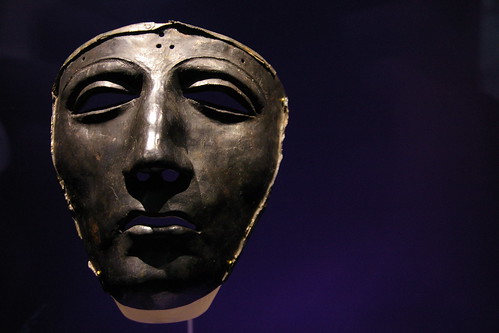
Ceremonial mask worn by Cohorions and Stratēgoi when at war. The mask depicts the face of Tarsus, the pagan Orminnian God of War.
The Accrossinate Empire doesn't rely on its legions alone. As with the Orminnian Empire, the current Empire also relies on auxiliaries and mercenaries to bolster their forces and perform task their legions could not. The modern legion still employs auxiliaries and mercenaries. The auxiliaries have taken on more roles while the mercenaries are hired to perform task that need special abilities. A list of Legion's Auxiliary forces are listed below:
Legion Gatling Gun teamsTeams of three that operates a Bargos hand-cranked, belt fed Gatling Gun. The team includes the feeder, which ensures the belt doesn't jam the gun itself up holding it up, the cranker, who cranks the gun in order for it to fire and the gunner who points the weapon at the direction needed. A legion would have at least 10 Gatling gun teams along with them at any given time.

A Bargos Gatling Gun.
Fo̱tiá stratió̱tesLiterally meaning "Fire soldiers" in Crassonian, the Fo̱tiá stratió̱tes are soldiers that use flamethrowers. The flamethrowers use a substance known as "Crassonian Fire" which if ignited, can prove very difficult to put out. The Crassonian Fire itself is stored in a canister that the Fo̱tiá stratió̱tes carry on their back. A legion would typically have a decemrii of Fo̱tiá stratió̱tes with them at any moment.
Legion Cannon CrewThe cannons are manned by three people. The spotter who declares the range of the opponents and the trajectory needed to hit them, the loader who places the gunpowder charge, the cannonball itself and a salvo, which is a small piece of wood jammed before the cannon ball itself to maximize to force that blows the cannonball out and the trigger person who ignites the fuse leading to the gunpowder charge. The cannon crew are under the command of a cannon crew "
ypolochagós" or lieutenant.

An Accrossinate Empire Legion's cannon.
Legion Combat EngineersAlthough every legionnaire is knowledgeable and capable on construction of different battlefield related structures, the legion also employs the Combat engineers for specificity task. The combat engineers are tasked typically with the construction (Although normal legionaries are capable of this task) and breaching trenches and other fortifications, bunker construction, bridge and road construction or destruction, laying or clearing land mines, and other physical work in the battlefield. More generally, the combat engineer's goals involve facilitating movement and support of friendly forces while impeding that of the enemy. A legion would typically have two decemries of combat engineers at any given time.
Legion Combat MedicsMembers of the auxiliary who have received emergency medical training. They are not as knowledgeable in the medicine as fully-fledged doctors but enough to possess the skills to needed to provide first aid and frontline trauma care on the battlefield. They are also responsible for providing continuing medical care in the absence of a readily available physician, including care for disease and battle injury. A leguion would typically have two decemries of Combat Medics at any given time.
Legion Tank CrewPersonnel who handle the operation of a Marron steam-powered tank. The tank has a crew of seven. The crew is compromised of the driver, the four operators of the Bargos hand-cranked Gatling gun(The gunner would also take on the role of the cranker), the operator of the Crassonian Flame ejecting flamethrower on top and the engineer who is in charge of feeding the boiler engine with coal at the back.
-Marron steam-powered tank- A steam-powered armored vehicle with a top speed of 20 km/h. It has an armament of two Bargos hand-cranked machine guns on either side and a Crassionian Flame ejecting flamethrower on its top. A legion would usually only have one of this tanks and most Stratēgoi would reject using them on the battlefield unless as a last-ditch effort to push enemy lines. Aside from being a huge target to artillery, the Maron also has a tendency of heating up to hellish levels inside it's hull. The tick armor plating tends to insulate the heat coming off from the boiler engine. As such, the conditions inside the tank are dreadful and a tank could only operate for an hour before the conditions inside are deadly enough to kill the crew. Because of this, the Maron has earned the nick name of "The Devil's Oven" from the legionaries.

Marron steam-powered tank.
The following list of mercenaries contracted by the Empire are listed below:
The Hannoic Horsemen
Agile horsemen who wear light armor and are adept at using bows and arrows. During their invasion during the 5th a.d and their constant raids afterwards on the Orminnian Empire, they would strike deep and fast. Using their fast moving cavalry, the Hannoic hordes were able to keep the Orminnians at bay. The Hannoic have retained their old traditions and the newest generation of Hannoic horsemen are still as capable cavalry bowmen as their ancestors. The Hannoic horsemen are now mostly used as cavalry scouts. They are sent before the main army to perform reconnaissance and would distribute vital information to high ranking officers. Hannoic horsemen refrain from the use of firearms as they believe their bows are arrows are more than sufficient of performing their task however, Hannoic commanders would usually carry pistols with them into battle.
Orcish Shock Troopers
Orc assault warriors organized for mobility with the intention that they will penetrate through enemy defenses and attack into the enemy's vulnerable rear areas. They wear little to no armor. They also have a habit of stealing enemy uniforms and patching them up together to wear as a sort of trophy. Thus, they are easily recognizable on the battlefield sporting their bright outfits. The Shock Troopers makes heavy use of lever-action rifles and revolver pistols.
Vallerian Vanguards
During the Jakarta flu, the Empire was thrown into turmoil as the plague ravaged the nation. The Empire's more rebellious elements found the opportunity to secede from the Empire as well as quarantine themselves from the outbreak. The Vallerians used the Jakarta flu outbreak to escape from their bondage from the Empire and once again instate their sovereignty. Being secluded from the rest of the Empire, the Vallerians were not affected as hardly as the rest of the planet's population and were able to reorganize far much faster and better than other nations. It soon found itself in rigid conflicts as noble families bid for power and control. They would soon find themselves hiring armies of mercenary crossbowmen known currently as the Vallerian Vanguards. Their name originated from being the first soldiers to enter combat by firing volleys of crossbow bolts at their enemies. Although they never fought in hand-to-hand combat, they excelled at being efficient and accurate. However the Empire now uses them for espionage and assassinations. They can lie waiting motionless for days to achieve their objectives. However, because of their indifference to the Empire and their deadly skills, high ranking officers themselves must keep a constant watch over them.
Navy and Air Force Overview: Unlike the other nations, the Accrossinate Empire has found a way to unite it's aquatic and aerial fleets. The Accrossinate Empire primarily still uses the iconic "
Bireme" class warship from the past Ormminian Empire. The Biremes are ancient oared warship (galley) with two decks of oars, probably invented by the Deocladians. Long vessels built for military purposes had relatively high speed, meticulous construction, strength, and depending on the number of rows of oars, were called uniremes, biremes, triremes, quadriremes, etc.The Biremes have been updated by the Empire by fitting it with cannons on its first lower decks while the second deck still holds oars and the last deck is for equipment. The Biremes have also been fitted with an iron skeleton to further fortify it's hull and support its weight when in flight. The Empire uses sails when at sea and is not engaged with the enemy. They use the oars to out maneuver the enemy and get to a strategic position before their enemies can. If the Biremes are needed to be deployed as aerial vessels, the crew of the ship would need to assemble the frame and air balloons needed for flight. This is tedious work which can take from three days to a week. The Biremes are also notoriously unstable during very high winds. The helium needed by the balloons for flight are stored in canisters at the last lower deck. When a balloon is needed to be inflated or inflated, the crew of the ship use large cotton hoses doused in Sisrem sap to make them air tight. The hose would be placed on a special opening where the helium would be delivered or siphoned from the balloon. To add to this, the prow or bow of the ship is very sturdy can ram any ships on the water or on the sky. The Accrossinate Empire also use a substance known as "Crassonian Fire" which if ignited, can prove very difficult to put out. The biremes would usually have two flamethrower devices mounted on either side near the bow of the ship to set enemies on fire with the said substances.

An Imperial Bireme.
Nation's Location: Nation's Geography:
Nation's Geography: Crassonia, the mainlands of the empire is mostly large areas of woodlands opening up to the coast with large, open plains. The coast itself has beautiful white sand beaches line up the coast. The highest point within Crassonia is the mountain of Allubis, which stands alone in the middle of Crassonia. The northern Orcish territories of Barmania are roughly the same as Crassonia. The difference being that the forest are thicker forest and less accessible to those not native to them. The same goes with the woods of Valleria to the south-east.
Economy Overview: The Accrossinate Empire's economy is understandably robust and stable with its capital, Konstalinnos, a major port hub in a major trading network. The Accrossinate Empire so called the "Gates to the East" because almost all trading vessels pass its waters. This is why the Empire focuses heavily on areas where they can easily manipulate trade by seas and oceans. The Empire also focuses on areas where they could expand aquatic trade routes to further tax merchants and traders. The Accrossinate Empire, like the Ormminian Empire before it, have left the mainland alone and instead looked to islands and coastal regions for expansion. However, large agricultural areas and areas of high mineral wealth also attract the Empire.
The main exports on the Empire are agricultural produce and crafts. The main agricultural produce of the Empire is wheat. This is followed by olive-related products and grapes. The Empire also exports herbs and vegetables. The main crafts of the Empire are mostly pottery. This ornate clay vases are painted with different designs that can be traced backed into the age of the warring city-states. The Empire is also known to export intricate articles of jewelry across the world. The ancient patterns and designs are known to attract a lot of buyers.
Because of the myriad numbers of traders and merchants that have acquired wealth under the Empire, a number of merchant families have gained wealth for themselves throughout the ages and have become a key faction within the Empire. Merchant houses usually have control of more then hundred of trading vessels. This houses also try to employ different foreign traders to further their wealth. The merchant houses are in constantly competition with each other to gain more wealth over the other. Some say that they would even go so far as to sabotage rival ships and murder influential captains and rival merchant family members. The houses have denied this as baseless rumors. The merchant houses pay the third highest rates of tax right after the aristocrats and the masonry guilds. It is believed that the houses are using their vast wealth and influence to convince the Emperor to lower their taxes. Again, the houses deny this accusation.




